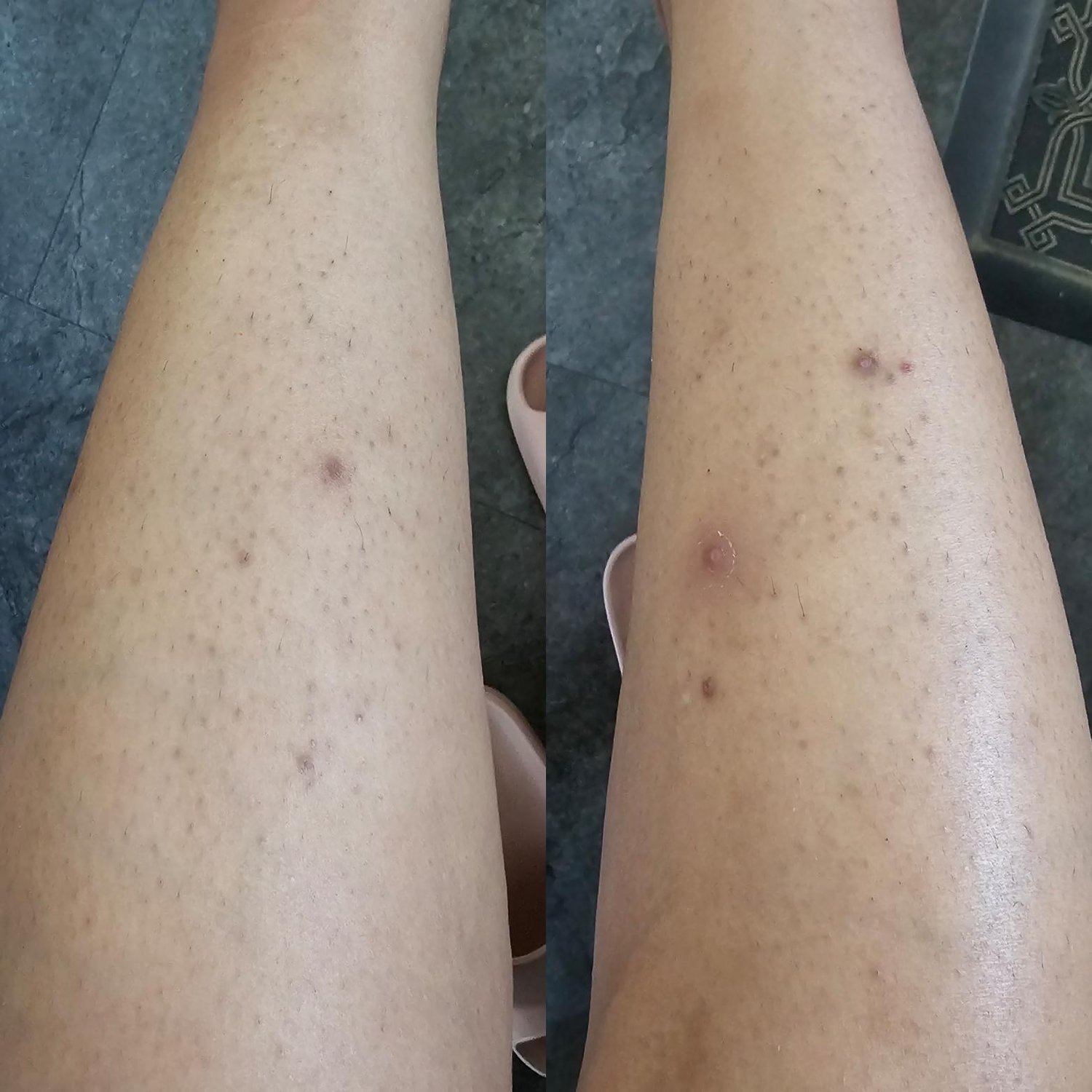If you’ve been frustrated by bumpy, itchy skin after shaving, you’re not alone. One of the most common questions people ask is, how do I get rid of ingrown hair on my legs? {كيف اتخلص من الشعر تحت الجلد في الساقين} While treating ingrown hairs is important, preventing them is even better. The key lies in the way you prepare, shave, and care for your skin post-shave. With a consistent and gentle routine, you can dramatically reduce the chances of these irritating bumps forming in the first place.
Preventing ingrown hairs helps your legs stay smooth, healthy, and free from unsightly marks or discomfort.
What Causes Ingrown Hairs After Shaving?:
When hair is cut too short or pulled at the wrong angle, it can curl back into the skin instead of growing outward. This leads to inflammation and the classic red bumps known as ingrown hairs.
Common Causes Include:
- Shaving with a dull or dirty razor
- Shaving against the direction of hair growth
- Dry shaving without proper lubrication
- Not exfoliating regularly to remove dead skin
- Tight clothing that rubs against freshly shaved skin
Understanding what causes them is the first step to prevention.
Pre-Shave Preparation Matters:
Preparing your skin properly before shaving can make a huge difference in preventing irritation and trapped hairs.
Pre-Shave Best Practices:
- Cleanse your legs with warm water to soften hair and open pores
- Exfoliate gently using a scrub or a soft brush to remove dead skin
- Apply a warm compress for a few minutes to further soften coarse hair
- Use a hydrating shaving cream or gel to reduce friction during shaving
Skipping preparation increases the chance of cutting hairs too short and driving them back into the skin.
Shaving Techniques That Prevent Ingrown Hairs:
How you shave plays a major role in whether or not you’ll develop ingrown hairs afterward.
Shaving Tips for Smoother Results:
- Always use a clean, sharp razor to avoid dragging and pulling
- Shave in the direction of hair growth to minimize irritation
- Rinse the blade after every few strokes to prevent clogging
- Don’t go over the same spot multiple times
- Avoid pressing too hard — let the blade glide gently over the skin
Proper technique can help you enjoy a closer shave without the uncomfortable aftermath.
Aftercare Is Essential:
The moments after shaving are critical. Your skin is more vulnerable, so giving it the right care ensures a smoother healing process.
Post-Shave Care Routine:
- Rinse your legs with cool water to close pores and soothe skin
- Pat dry with a soft towel — avoid rubbing, which can irritate
- Apply a fragrance-free moisturizer to keep skin hydrated
- Use a lightweight serum or toner with ingredients like witch hazel, tea tree oil, or salicylic acid to calm inflammation
- Avoid tight clothing for a few hours to prevent friction
Aftercare locks in the benefits of a safe shave and keeps irritation away.
Weekly Maintenance to Keep Legs Clear:
In addition to your shave routine, consistent weekly habits go a long way in preventing future ingrown hairs.
Maintenance Habits:
- Exfoliate 2–3 times per week to keep pores clear
- Moisturize daily to maintain skin’s natural barrier
- Switch razors frequently — replace after 5–7 uses
- Stay hydrated to keep skin supple and healthy
- Avoid shaving daily to give your skin time to recover
The more you support your skin’s health, the less likely ingrown hairs will occur.
Natural Remedies to Soothe Skin:
If you're prone to mild irritation or occasional ingrown hairs, natural remedies can provide gentle relief.
Soothing Options:
- Aloe vera gel to cool and calm the skin
- Chamomile tea compress for anti-inflammatory effects
- Honey and turmeric mask for antibacterial protection
- Coconut oil as a moisturizer with healing properties
These remedies are especially helpful for those with sensitive or reactive skin types.
When to Change Your Hair Removal Method:
If you’re still experiencing frequent ingrown hairs despite perfect shaving habits, it might be time to explore other options.
Consider These Alternatives:
- Laser hair removal for long-term reduction in hair growth
- Epilators that pull from the root with less irritation over time
- Hair removal creams (patch-test first to avoid chemical reactions)
- Sugaring or waxing, if done correctly, can lead to fewer ingrown hairs than shaving
Changing how you remove hair may significantly reduce recurring ingrown hairs.
When to See a Dermatologist:
Sometimes, ingrown hairs persist or become painful, indicating the need for professional treatment.
Signs It’s Time for Expert Help:
- Persistent bumps that don’t heal
- Ingrown hairs developing into cysts or abscesses
- Post-shave skin discoloration or scarring
- Recurring ingrown hairs in the same spots
- Suspected infections or severe inflammation
A dermatologist can prescribe medicated creams or offer procedures that minimize recurrence.
Final Thoughts:
Still asking yourself, how do I get rid of ingrown hair on my legs? The truth is, it starts before you even shave. Preventing ingrown hairs is all about thoughtful preparation, proper technique, and consistent aftercare. With the right routine, your legs can stay smooth, bump-free, and radiant.
Whether you're a frequent shaver or just prepping for a special occasion, following these preventive measures can help you achieve lasting results and healthier skin.

